danbricklin.com/log
|
||
|
|
Starting July 8, 2003
9 years of bricklin.com, Lightning last week and comments on backup, Big Dig tour, Back from Oregon, Bill Mitchell of Microsoft and the Tablet PC, QOS essay, Segway book, Old software boxes, Items on SATN.org
8Jul03-29Aug03
2003_07_08.htm
|
|
|
9 years of bricklin.com [link]
Nine years ago today, August 29th, 1994, registrations for the domains "bricklin.com" and "softgarden.com" came through. At that time I just used them for email, hosted by The World (world.std.com -- std = Software Tool and Die -- the first public dialup ISP). The web site "www.bricklin.com" went live about three and a half years later in January of 1999 (hosted, coincidentally, by Interland, where I'm now CTO). When I applied for my domains, according to my notes, "garden.com" wasn't available, but it had been in January 1994 when I checked but didn't do anything. (Software Garden holds the trademark "Garden".) Bob registered "frankston.com" over 2 years earlier in January 1992 (many months before "lotus.com"). I feel like such a laggard...
Lightning last week and comments on backup [link]
Last week a thunderstorm watch was declared for this part of Massachusetts. I drove home from work just ahead of it. About half an hour before the end of the watch period, the storm came through. Rain, and several cracks of lightning. One was real close -- the sound was loud and the flash and crash were virtually simultaneous. No flickering of the lights, though, so I guessed it wasn't too bad. I looked out the front: The trees in front of the house were still there. It must have hit up the hill a bit.
A little while later, I walked out on the front porch to see if the rain had stopped. I saw a neighbor racing away in his car. I heard sirens in the distance. He just was moving his car down the block and came running back. I asked him what happened. He pointed to the house across the street and said it had gotten hit and had a fire they couldn't put out. The fire trucks were almost here. I quickly moved my car from the front as they pulled up. They put up a ladder and put out the fire. Water and smoke damage, but the house was basically saved, I believe.
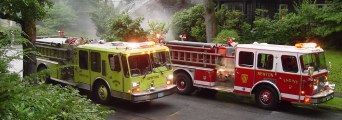 Fire trucks in front of my house to put out a lightning fire across the street
The people who were in the house that was hit found out about it when their fire alarm went off from the smoke in the attic. Their phone didn't work and they used a neighbor's to call the fire department. Neighbors on both side, though, felt the lightning. One in a room about 40 feet away felt her hair stand on end. Another, about 100 feet away in her enclosed porch, was knocked to the ground and felt like she had put her hand in an outlet. I sit, typing this, also about 100 feet away, my head about 5 or 10 feet lower than where the lightning struck.
My computer equipment is all on surge protectors. Actually, most is on battery backup power supplies. The CPUs and disk drives did fine. My laptop was on the first floor, still in the bag, unconnected and apparently safe. But...my cable modem lights acted funny and wouldn't do DHCP. My router power light was off and stayed off. The network card in my Linux machine tested fine, but the lights flashed wildly when it tried to communicate on a network. The old Ethernet hub connecting my wireless access point and downstairs computer refused to turn on (though the computer and access point worked fine, along with other machines). A mild surge must have come in the cable, which connects to a tap right next to the house that got hit, and traveled through the cable modem to my router, and on to the rest. (See my old "Living in the Analog World: Cable Modem Maintenance".)
For such situations, I do have backup. I switched to my DSL line, which still worked fine and has its own router, and was back online in minutes. Today, a few days later, they came to replace the cable modem. I have an extra router to connect to the new modem, and Bob had an extra network card lying around that I fixed my Linux box with over the weekend. (Both Windows and Linux detected it as new and switched over fine.) Now, I just have to replace the hub (I've been switching between things by hand for now). As I watch the neighbors airing out their rugs, I realize how much worse it could have been. The cable company support people told me there wasn't too much I could do (other than disconnect everything from everything every time it rains, I guess).
On the topic of backup, I was in Newport, Rhode Island, the other day. In one old mansion, the guide pointed out a chandelier that was built to have both gas and electric. Electricity was new and not reliable at the time, so there was gas backup. Nothing new here with cable and DSL.
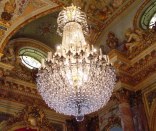 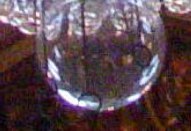 Old, dual system chandelier, closeup showing rings at the end of cables for controlling the gas
As the blackout in the Northeast this month showed (along with virus and worm problems), the need for backup is real and an integral part of living in a technological society. Everything can fail in various ways, so if you will miss it, be prepared. The preparations sometimes help. During the blackout, a relative who works in NYC stayed with a visiting friend in a hotel that had backup power for an elevator and hall lights, unlike many other hotels with no such power. He was intrigued by how different buildings had different choices of things on backup, from massive decorative outside lighting to elevators. Sometimes the choices were bizarre.
Big Dig tour [link]
As part of being a member of the Board of Overseers of Boston's Museum of Science, I got invited to participate in a tour of part of Boston's Big Dig project. (The Big Dig web site implies that others can arrange for tours, too, if you are interested.) I took Bob Frankston along as a guest and took pictures.
It started out with a slide show (real 35mm slides...) showing the history of this "largest, most complex, and technologically challenging highway project ever attempted in American history". Without dropping a lane of traffic while doing it, Interstate 93, which cuts through downtown Boston and carries 200,000 vehicles a day, is being moved from an elevated 6-lane highway to an underground 8-10 lane highway. In addition, I-90, the Massachusetts Turnpike, is being extended under another part of the city, with buildings and lots of water, to finally reach the East Coast and Atlantic Ocean (and the airport). The Big Dig is miles long in each direction. They had to build a concrete box under a deep subway line to hold it up and then run part of the highway through the box, 120 feet underground. There is a beautiful new bridge at one end.
 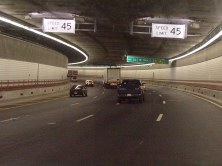 Slide with a diagram of the highway under the subway, driving on that highway later in the day
Seeing the project described, it seemed like a description of a major renovation project in your house, except that all the parts weigh hundreds of tons instead of a few pounds, and there is harbor water all over the place to be contended with. Oh, and you have boarders who don't want to be disturbed.
After the slide show, we picked up hard hats and vests, and were driven to the Operations Control Center Complex to see where they will monitor the whole thing when it's done. Lots of TV monitors and DEC computer equipment (the Big Dig was built over the last 12 years):
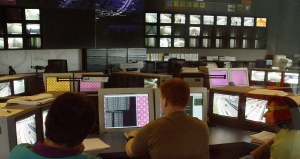 Control Center
Next we went into the Southbound tunnel, still under construction:
 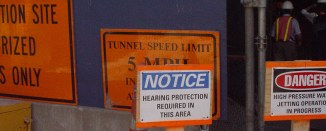 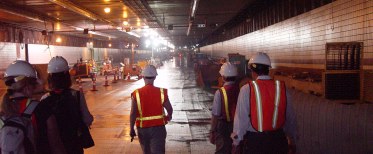 Our group walking into the unfinished tunnel
Outside, we went over to the Southbound side of the breathtaking Lenny Zakim Bunker Hill Bridge, currently the widest cable-stayed bridge in the world:
 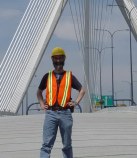 Looking out North to the Zakim Bridge with an old onramp still being held up by temporary beams, and me standing in the middle of the unfinished roadway
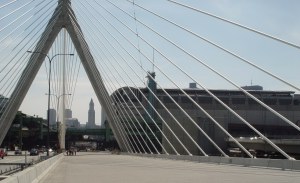 Looking south to downtown Boston
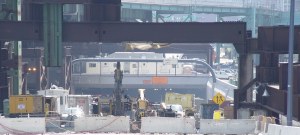 Looking back into the tunnel
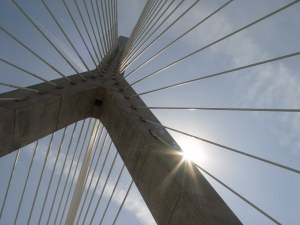 It's a photographer's dream to take pictures here
I wrote up a little bit about the Big Dig four years ago as part of my coverage of my trip to the Digital Storytelling Festival. See "The Big Dig".
I am really struck with the complexity and scale of this project. It must have millions and millions of individual parts, so many of them custom designed and assembled. It's like Windows XP and Office where you need to use cranes, jack hammers, and welding to put each of the lines of code together. And it replaces something that has lasted over 40 years.
Back from Oregon [link]
I'm back from a vacation in Oregon, seeing various sights. It was very nice, but I've got to get back to work and don't have much time to write it up. Here are a few pictures:
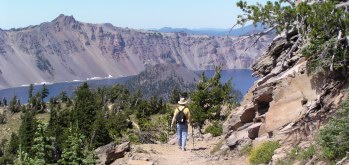 Dan hiking overlooking Crater Lake
   View north from Cannon Beach, Tufted Puffins on Haystack Rock, and an Egret at the Lower Klamath National Wildlife Refuge
Bill Mitchell of Microsoft and the Tablet PC [link]
The other day Bill Mitchell, VP of Tablet and SPOT at Microsoft, was in town meeting with analysts and who knows who else. He invited me to get together at a local Starbucks and talk about the Tablet PC. It seems Microsoft is moving along as they work towards the next release of the software. He brought an NEC tablet modified with a cool screen that was readable at very wide angles -- really nice. (The NEC is also quite light, well balanced, and rigid, but not the convertible form factor I prefer for my normal, everyday machine.) It is clear from what he told me that there will continue to be variations in hardware designs from various manufacturers, such as some more like a traditional laptop as well as the pure tablets (I suggested some other forms...), and that Microsoft continues to help drive things with experimentation on their part. The advances he talked about in the software show a better integration with everyday use of applications, but nothing earthshaking as far as I can tell. We talked about handwriting styles, and I encouraged him to cater better to those of us with tiny, jaggy, chicken-scratch writing instead of just those with big, smooth, cursive letters.
It's interesting to see how involved in the hardware Microsoft needs, and is willing, to be in order to move this all along.
Here are some pictures:
   The modified NEC from two angles, Bill Mitchell holding it and an Acer
In terms of my use of my Tablet PC, I have found the pen useful for sketching diagrams for drafts before I use a graphics program to make "nicer looking" versions. For example, for a draft of my QOS essay last week, I used this (reduced with Photoshop):
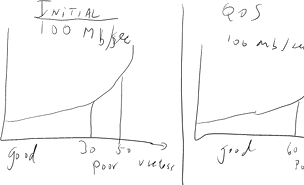 Part of draft of QOS Figures 2, 3, and 4
Here is a "snip" of the final version on the web page (reduced 50% with Photoshop):
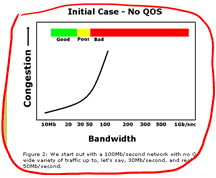 "Snipped" image selected with the pen from the web page
Bill reminded me of the PowerToys for the Tablet PC. These are free downloads available on the Microsoft website of simple applications. These demo, "early-beta"-level apps, include the "snipping tool" which makes it easy to draw around something you see on the screen and copy it to the clipboard, email, or save (like the image above). It sort-of remembers the URL if it's from a browser, too. The ease with which you can just outline something you see on the screen with the pen, perhaps mark it up with annotations, and insert it into a document, along with inserting simple sketches as I did, is a major "productivity" improvement with the pen. Microsoft just added some new PowerToys to the list a couple of days ago, including one for drawing music and playing it.
QOS essay [link]
I posted a new essay in the Writings section of my main web site about the issue of Quality of Service (QOS). It's in reaction to what I keep reading about how all sorts of applications for the Internet will require new QOS features in order to work. There is this feeling that special handling of "the right traffic" (to the detriment of other data packets) will be required to make things work. I believe that there are some dangerous flaws in this type of thinking. Not only can QOS make the Internet worse for applications we need and depend upon, it won't be able to help deliver on its promise. I also believe that while the need for QOS sounds intuitive at first, once you think about it a bit, you'll see that common sense argues against it in the context of the Internet.
To help look at this issue I try to learn from an everyday form of QOS in a different field: Emergency vehicles on the roads.
The bottom line? Working on QOS only helps a small percentage of traffic work a bit better for a small increase in utilization. Routinely, we have increased computer network capacity by factors of 10 through new technology, and there is no reason to believe this will stop. Complicated QOS techniques can slow the creation of newer, higher capacity transports that would lessen the need for QOS in the first place.
 Cars pulling over as a fire truck passes by
Segway book [link]
A little while back a package arrived at the office: A copy of Steve Kemper's book about the development of the Segway: Code Name Ginger: The Story Behind Segway and Dean Kamen's Quest To Invent a New World [link to Amazon]. It was compliments of Hollis Heimbouch of Harvard Business School Press. She was the one who did the deal for the book (the leak of which started the "Ginger/IT" frenzy back in early 2001), but she's also the person who proposed and then "helped" me write the article under my name that appeared in Harvard Business Review in September 2001. I write this late Tuesday night as I fly back from vacation, having just finished reading the book.
   Hollis of HBS Press next to Ed Belove at an event at Bob Metcalfe's house where I first met her, Dean Kamen when I first saw him at a FIRST fund-raising event at Agenda 2000 in October 1999, the book cover
It's a riveting book for me, as an entrepreneur, business person, and engineer. Also, I've run across many of the people in the book through their connection to the computer business (like John Doerr, Jeff Bezos, Steve Jobs), which makes it even more interesting for me. Dean Kamen is a fascinating individual, who has already had a big influence on the world, and probably will end up having more. (I recently wrote up a bit about a talk he gave and have written much about the Segway HT itself on this web site.)
The circumstances of the book lead to an interesting perspective.
It started out as an "authorized" inside look, with the author, Steve Kemper, invited in to follow Dean around as the Segway development started. He spent lots of time with Dean and others on the team, and attended design, management, and financing meetings. Kemper is not an engineer, but he gives enough of the details to get a feel for a lot of the design challenges. He captures much of the human element, without too much sappiness. You get the feel for the hunt for funding (and a view of the personality of Doerr, Bezos, Jobs, and others) and the jockeying between different funding sources. I enjoyed reading about Jobs and Bezos in a context divorced from Apple and Amazon. There is almost enough material about organizational and managerial issues that came up during development to fill a semester course. This is no simple fairy tale.
Dean has a strong charisma field around him, and Kemper seems to have gotten quite close to him at times and has enormous respect for him, so you might find some of his choice of descriptions suspect. But something happened: The inadvertent leak about the book resulted in a split between Dean and Kemper, which seems to have given Kemper a nice "insider/outsider" position that I feel adds to the book, even as I wish for the details of the last year before shipment that he wasn't privy to. Also, the tension there probably made Kemper and HBS Press careful to use only documented firsthand accounts as much as possible. That means there are probably holes from an historical viewpoint between trips Kemper made to New Hampshire, but that's made up for by the intimacy of his access when he was there.
The book gets slow at times, as one revision after another of the product is developed, and the quest for funding goes on and on. Having been in such situations (on lesser projects), though, that is pretty realistic, and did keep me turning the pages. The pages and pages about problems being agonized over (such as the design of the handlebars) helps drive home how much goes into something that seems so simple and how difficult the task of building this thing was. The difference between Code Name Ginger and some other "start up" books and movies is the spice of Dean Kamen throughout. The image of the founder/inventor already a successful multimillionaire flying out to hustle for money in his own jet, and the constant presence of his beloved FIRST, gives his chutzpah and drive a different, fascinating angle. I enjoyed it.
Old software boxes [link]
I've been spending a lot of my time coding for Interland and helping with specs, along with some SMBmeta evangelizing. Not much worth writing about here. There have been, though, some thought-provoking (for me) interviews with the press and analysts on small business blogging, VisiCalc, etc. Unfortunately, I haven't gotten the time to write up those thoughts. Hopefully the reporters will.
I did, though, get a little time to try to make room on my bookshelves. All those O'Reilly, et al, books on Perl, mySQL, CSS, etc., that I have to buy and refer to take up a lot of space, along with Adobe, Microsoft, etc., software boxes. I decided it was time to get rid of some of the old software that was just hanging around, much of it from the early 1990's.
Being a computer history buff of some sort, and a pack-rat, I can't bear to lose these old memories. But, on the flip side, there was no need (and space) for all the air and cardboard in those boxes. My compromise was to photograph the boxes of all the software and keep the insides of some of the most "historic" and influential. Digital pictures take up almost no space (hundreds fit on a CD at very high resolution), and the boxes usually list features, screen shots, etc., that tell enough of the story to answer questions about when a feature existed.
Here are some sample box pictures:
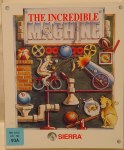 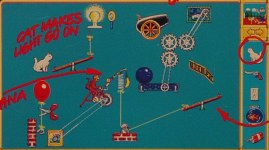 Front and detail from the back of Sierra On-Line's "The Incredible Machine", a great game
 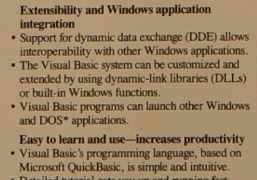 Front and detail from the back of Microsoft Visual Basic 1.0
Items on SATN.org [link]
The last few weeks have been pretty slow, blogging-wise here. I've posted a couple of items on SATN.org, though (as has Bob Frankston):
I put them there first, since they seemed more techie, and SATN is a more techie weblog, with this being more personal. Since the topics often overlap (such as Fair Use and DRM which relates to some of my writings here about artistic material), I try to keep references in both places.
|
||
|
© Copyright 1999-2018 by Daniel Bricklin
All Rights Reserved.
See disclaimer on home page.
|
||